Wharram Percy
Chrissie Harrison
Wharram Percy is the site of a deserted medieval village tucked away in a beautiful valley in the Yorkshire Wolds.Academic interest in the site began in 1948 when the historian Professor Maurice Beresford visited the site, as part of his research, later published as the best-selling "Lost Villages of England". Realising the potential of this deserted medieval village site, with its superbly preserved earthworks of house sites, field systems and its ruined church, he was soon joined by the eminent medieval archaeologist John Hurst.
Together they managed and oversaw the seasonal summer excavations which were to span five decades ending in 1990. This pioneering work made Wharram Percy Europe's most famous deserted medieval village.
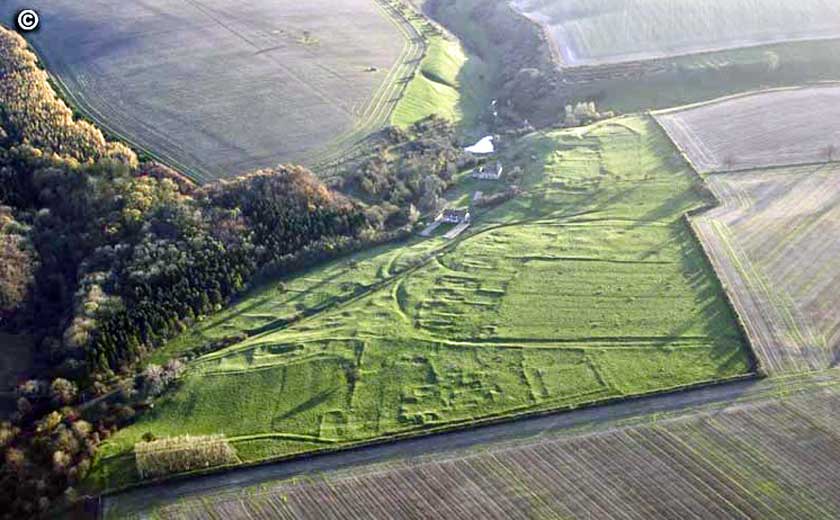 Aerial view of WP looking S, with the earthworks of the C13th northern Manor in the foreground. The holloway and the medieval villagers house sites can be seen on the higher ground, whilst the remains of the church and the modern cottages are in the valley below
Aerial view of WP looking S, with the earthworks of the C13th northern Manor in the foreground. The holloway and the medieval villagers house sites can be seen on the higher ground, whilst the remains of the church and the modern cottages are in the valley below
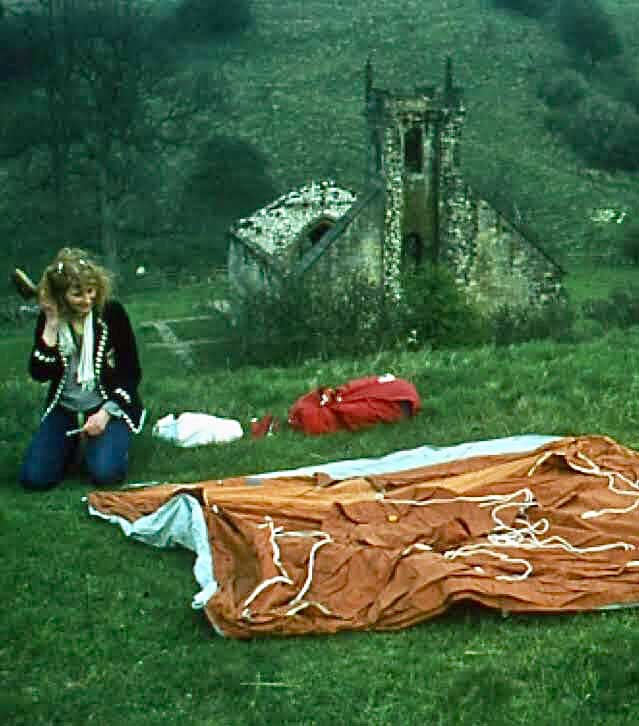 1980: And so it begins: pitching my tent, my home for the next month a welcome world away from Islington and City life
1980: And so it begins: pitching my tent, my home for the next month a welcome world away from Islington and City life
I was very privileged to be a part of the Wharram family for four seasons 1976-1980 and like many others who worked there made some lifelong friends. My trench was on the North Manorial boundary, a little walk away from the main areas of excavations concentrated around the church and the watermill site
We were high on the hill, on top of the Wolds overlooking the Vale of Pickering, with nothing but inquisitive cows and the sounds of skylarks for company. Our sites recorded the remains of Roman-British farmsteads, a Mid Saxon Grubenhaus as well as a later medieval grain-drier and other features associated with the later abandoned manor house complex.
https://www.hobleysheroes.co.uk/home-or-away/away/wharram-percy#sigProIdd368dcecff
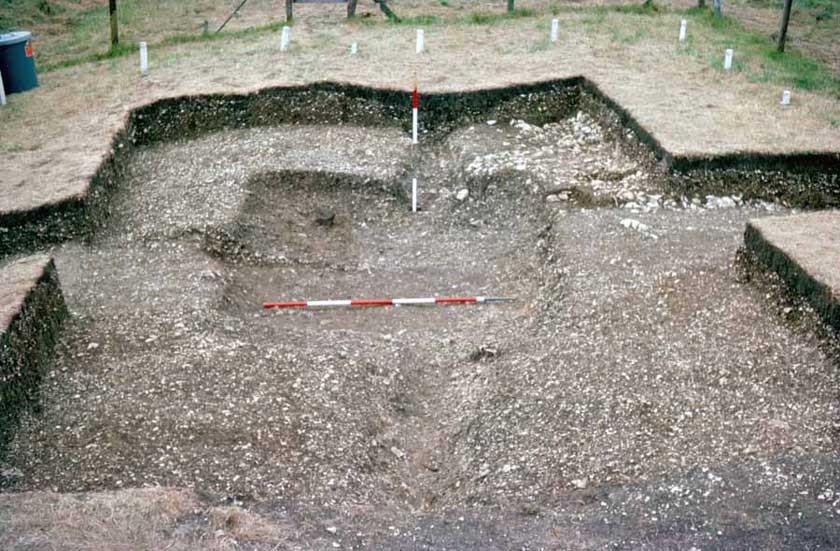 GRUBENHAUS excavated over two seasons 1976/7. A trial trench on the northern boundary of the medieval village initially indentified the sunken feature which was fully excavated the following season. It has been dated to the 8th century. Finds included high-class Tating ware, a bone comb, spindle whorls and a silver sceatta (AD737-758).
GRUBENHAUS excavated over two seasons 1976/7. A trial trench on the northern boundary of the medieval village initially indentified the sunken feature which was fully excavated the following season. It has been dated to the 8th century. Finds included high-class Tating ware, a bone comb, spindle whorls and a silver sceatta (AD737-758).
The archaeology was as absorbing as the camaraderie of the diggers: the 1980 season was particularly memorable. Under the auspices of Philip Rhatz and Steve Roskams, students from York University were added to the diverse mix of diggers, the second Viking invasion imposed on Saxon Wharram.
To mark this historic occasion Gustav Milne (aided by Warwick Burton) wrote and directed a pageant. On a beautiful summer's evening, near the end of the season, it was showtime.
Everyone was involved to some extent but nobody knew exactly what was going to happen. There were a few rehearsals of different sections but no full dress rehearsal which really added to the fun and excitement. All costumes and weapons were handmade, and the finds tent team dedicatedly ate loads of chocolates, as the wrappers became the jewels in the crowns. We prayed it would be all alright on the night.
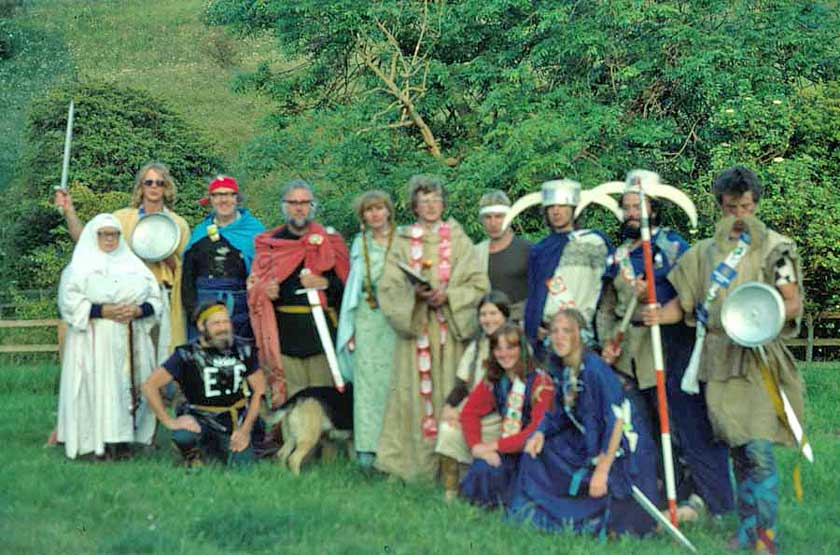 Pageant: York university students (Viking invaders dressed in blue), Betty Ewins (The Abbess of Twitby), Nick Bateman (Saxon warrior), Maurice Beresford (reporter from Anglo Saxon Chronicle), John Hurst (King Egghurst), Chrissie Harrison (Queen Egghurst), Warwick Burton (Archbishop of Banterbury), Gustav Milne (Orator), Paul Herbert (Saxon warrior), with Wharramites John and Vikki Watts (seated)
Pageant: York university students (Viking invaders dressed in blue), Betty Ewins (The Abbess of Twitby), Nick Bateman (Saxon warrior), Maurice Beresford (reporter from Anglo Saxon Chronicle), John Hurst (King Egghurst), Chrissie Harrison (Queen Egghurst), Warwick Burton (Archbishop of Banterbury), Gustav Milne (Orator), Paul Herbert (Saxon warrior), with Wharramites John and Vikki Watts (seated)
The event was performed in the nave of the ancient ruined church, open to the sky. As we didnt have any curtains for the stage, we asked the audience to close their eyes as the cast took up their places while a lone piper scaled the church tower, and magically played his flute to open the proceedings.
I was crowned Queen of Wharram and sat on my throne next to King Egghurst (John Hurst). He was so funny and genuinely delighted by the jokes aimed at the Yorkists about context Interface-decision-making and the god Matrix: a very splendid time was guaranteed for all!
Another first that season was the arrival of showers. Previously a good wash was only once a week at a school in Malton, followed by fish and chips.
Also the addition of Marmite made a welcome addition to the copious amounts of white sliced available.
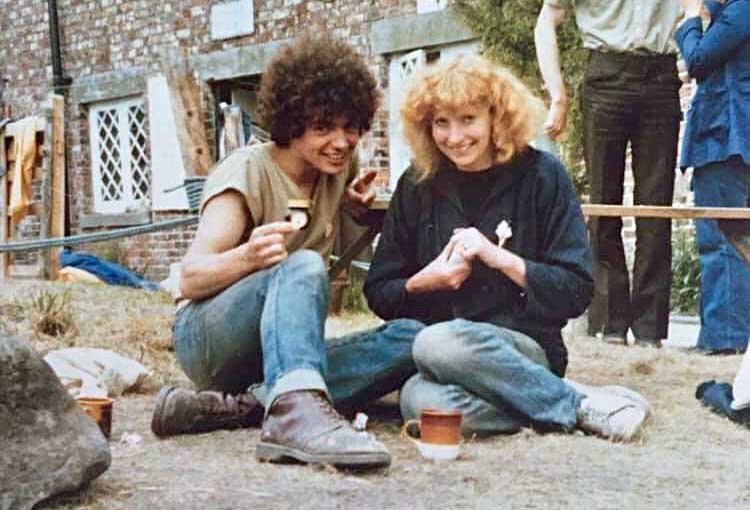 Wharramites welcome marmite: me with Paul Herbert
Wharramites welcome marmite: me with Paul Herbert
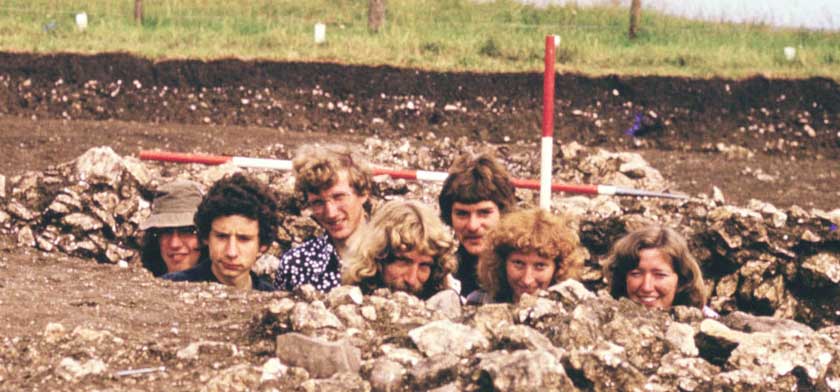 1978: Team posing in the grain drying pit. Steve Parry, Warwick Burton. Gustav Milne, Me, Philippa Voyiagis nee Sanderson
1978: Team posing in the grain drying pit. Steve Parry, Warwick Burton. Gustav Milne, Me, Philippa Voyiagis nee Sanderson
Many London diggers were involved in the Wharram Percy project. Charlotte Harding started the trend, for she had been working there for many years before me and even Steve Parry honed his skills there. A busman’s holiday yes but a world away from urban archaeology.
Living in a tent for almost three weeks, country life, no traffic, long walks-saved a distressed sheep one evening stuck in a fence. Drinking in the local pub some three miles away so walk there and cadge a lift back.
Up early on breakfast duty: full English of course, frying eggs to order with a big smile. All those sleepy faces in the queue and a very good morning to everyone. Very fond memories indeed.



Comments powered by CComment